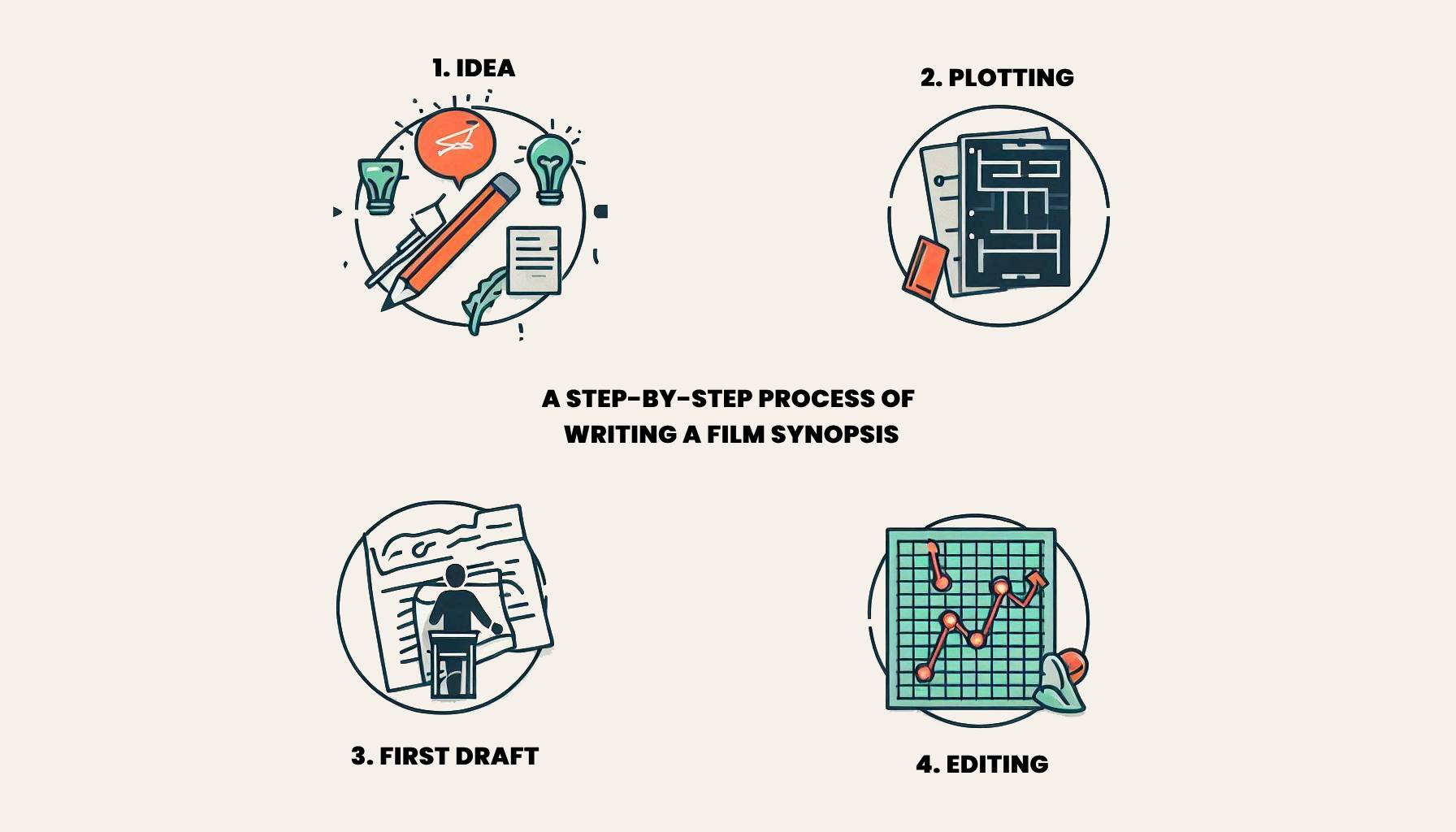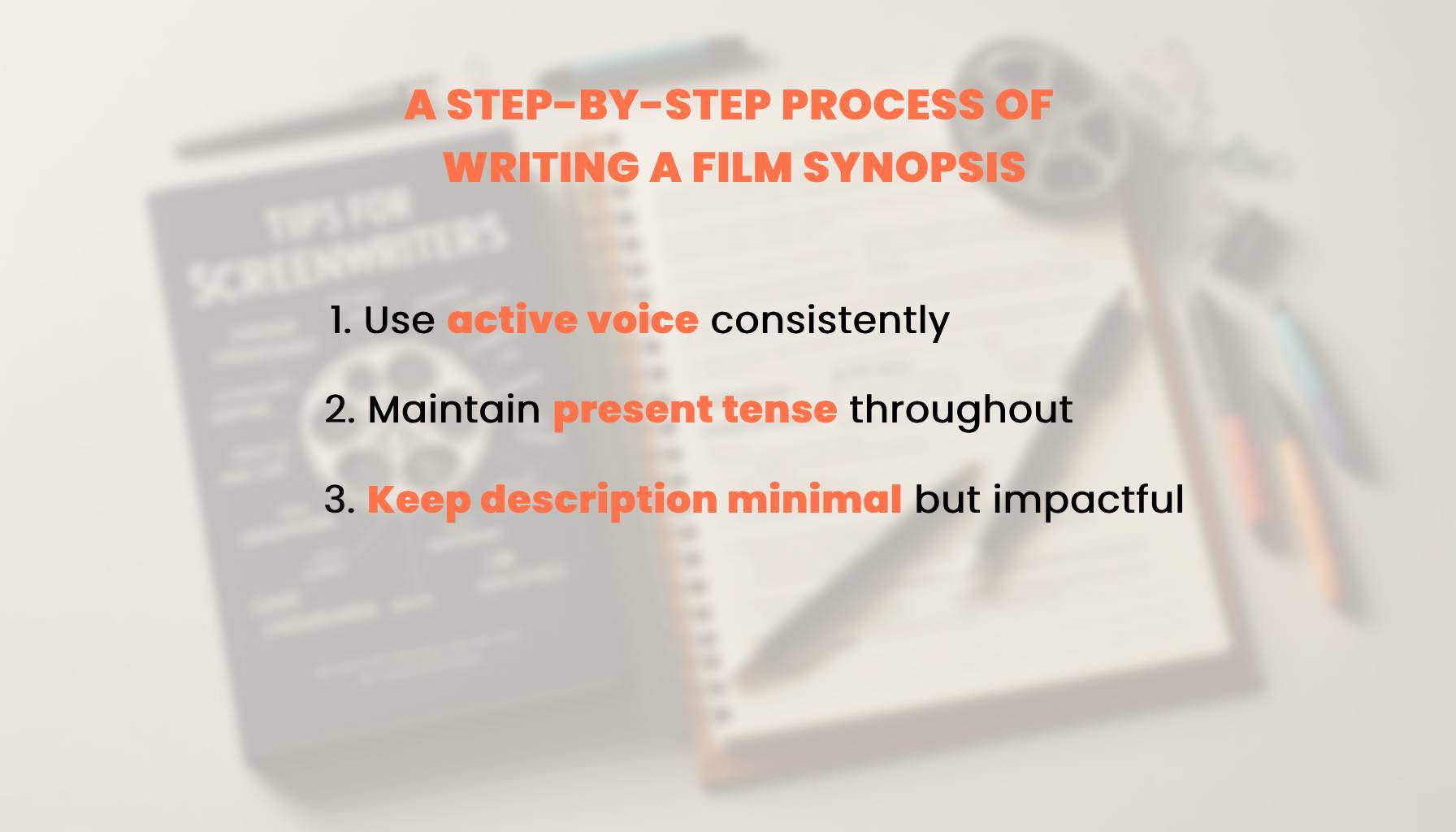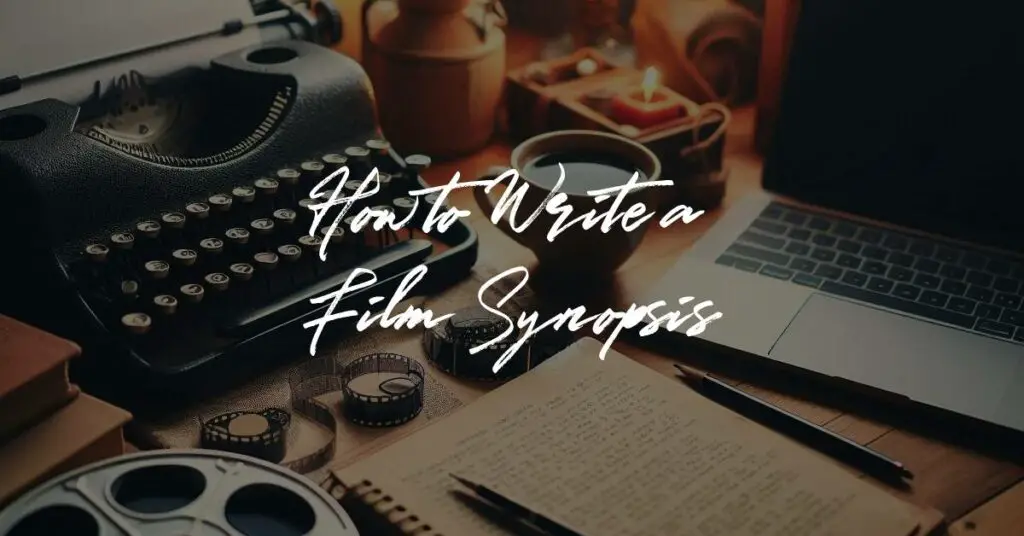In the competitive world of screenwriting, your brilliant script might never see the light of day without a compelling synopsis.
A well-crafted film synopsis serves as your screenplay’s passport to success, opening doors to producers, agents, and film festivals. This comprehensive guide will walk you through everything you need to know about writing a film synopsis that captures attention and sells your story.
What is a Film Synopsis?
A film synopsis is a concise yet comprehensive summary of your screenplay that outlines the complete narrative arc while maintaining the emotional impact of your story.
Think of it as the written equivalent of watching your film in fast-forward – every crucial plot point, character development, and story beat must be present, just in a condensed form.
Unlike other film industry documents, a synopsis serves a unique purpose. While a logline is a one-sentence hook and a treatment is a detailed pre-writing tool, a synopsis bridges the gap between these extremes.
It provides enough detail to convey your story’s depth while remaining concise enough to maintain reader interest.
Key Characteristics of a Good Synopsis:
- Clarity in storytelling
- Complete narrative arc
- Essential character development
- Major plot points inclusion
- Emotional resonance
- Professional presentation
When Do You Need a Film Synopsis?
Your film synopsis is a versatile tool that serves multiple purposes throughout your screenwriting journey. Film festivals often require a synopsis as part of their submission package.
Producers and executives use synopses to quickly evaluate potential projects. Literary agents review synopses to determine if they want to represent your work. Even in marketing and distribution, your synopsis can form the foundation for promotional materials.
Essential Elements of a Film Synopsis
Header Information
Every professional synopsis begins with crucial identifying information:
- Title of your screenplay (in bold or all caps)
- Genre
- Your full name and contact information
- WGA registration number (if applicable)
Basic Structure and Formatting
The industry standard for a film synopsis follows specific formatting guidelines:
- Length: One to three pages (depending on requirements)
- Font: 12-point Courier or Times New Roman
- Margins: 1-inch all around
- Spacing: Single or double-spaced (check specific requirements)
- Alignment: Left-aligned
- Paper: Standard white 8.5″ x 11″
Core Components
Opening with Impact
Your synopsis should begin with your logline – a one-sentence summary that hooks the reader and establishes your story’s core concept. This opening sets the tone and provides immediate context for what follows.
Character Introduction
Introduce your main characters when they first appear in the story, using CAPS for their first mention only. For example: “JOHN SMITH, a world-weary detective, discovers a mysterious package.” After this, refer to characters by first name only.
Plot Progression
Present your story in chronological order, maintaining present tense throughout. Your synopsis should cover:
- Inciting incident
- Major plot points
- Key character decisions
- Critical turning points
- Climax
- Resolution
Step-by-Step Guide to Writing Your Synopsis
Pre-Writing Phase
Before diving into writing, organize your thoughts:
- Identify your story’s core elements:
- Main conflict
- Character goals
- Major obstacles
- Theme
- Tone
- List key plot points in chronological order
- Map character arcs and development
- Note emotional high points and low points

First Draft Structure
Structure your synopsis following the three-act format:
Act 1: Setup (1-2 paragraphs)
- Establish the world and tone
- Introduce main characters
- Present the inciting incident
- Set up the main conflict
Act 2: Conflict (2-3 paragraphs)
- Escalate the conflict
- Show character development
- Present major obstacles
- Include key turning points
Act 3: Resolution (1-2 paragraphs)
- Build to the climax
- Resolve main conflicts
- Show character transformation
- Provide satisfying conclusion
Writing Tips and Best Practices
Language and Style
- Use active voice consistently
- Instead of “The murder was committed by John,” write “John commits the murder”
- Maintain present tense throughout
- “Sarah discovers the truth” not “Sarah discovered the truth”
- Keep description minimal but impactful
- Focus on action and emotion rather than physical details

Common Mistakes to Avoid
- Overwriting
- Don’t include every subplot and minor character
- Focus on the main narrative thread
- Too Much Detail
- Avoid scene-by-scene breakdown
- Skip technical specifications
- Leave out camera directions or shooting instructions
- Unclear Character Motivations
- Always make character decisions logical and clear
- Show the emotional reasoning behind major choices
- Poor Formatting
- Follow industry standards strictly
- Maintain consistent formatting throughout
Genre-Specific Considerations
Different genres require different approaches to synopsis writing:
Drama
- Focus on emotional arcs
- Emphasize character relationships
- Highlight internal conflicts
- Show character transformation
Comedy
- Convey the tone and style of humor
- Include key comedic sequences
- Show character dynamics
- Maintain light tone while showing story depth
Horror/Thriller
- Build tension progressively
- Show escalating stakes
- Reveal key scares or twists
- Maintain suspense
Action
- Highlight major action sequences
- Show escalating danger
- Focus on pacing
- Demonstrate clear stakes
Romance
- Show relationship development
- Include emotional turning points
- Demonstrate chemistry through conflict
- Build to emotional payoff
Quality Control Checklist
Before submitting your synopsis, verify:
Content
- Complete story arc included
- Character motivations clear
- Conflict properly established
- Resolution satisfying
- Tone consistent
Technical Elements
- Proper formatting
- Correct spelling and grammar
- Present tense throughout
- Active voice used
- Professional presentation
Industry Standards
- Length requirements met
- Header information complete
- Page layout correct
- Font and margins proper
Tools and Resources
Writing Software
- Final Draft
- Celtx
- WriterDuet
- Microsoft Word with proper formatting
Proofreading Tools
- Grammarly
- ProWritingAid
- Hemingway Editor
Conclusion
A well-written film synopsis can be the key that unlocks opportunities in the film industry. By following this guide, you’re equipped to create a professional, compelling synopsis that does justice to your screenplay. Remember, your synopsis is often the first impression industry professionals will have of your work – make it count.
Key Takeaways
- Keep it clear and concise
- Follow proper formatting
- Focus on main plot and characters
- Show complete story arc
- Maintain professional presentation
- Review and revise carefully
Next Steps
- Draft your synopsis following these guidelines
- Get feedback from peer writers
- Revise based on feedback
- Verify industry standards
- Submit with confidence
Additional Resources
Industry Websites
- Writers Guild of America (WGA)
- International Screenwriters’ Association
- Final Draft
- Save the Cat
- Stage 32
Professional Communities
- Screenwriters Network
- Writer’s Digest
- Done Deal Pro
- Reddit’s r/Screenwriting
- Script Magazine
Remember, a great synopsis is a living document – don’t be afraid to revise and refine it as your script evolves or based on industry feedback. The time invested in crafting a strong synopsis will pay dividends throughout your screenwriting career.
